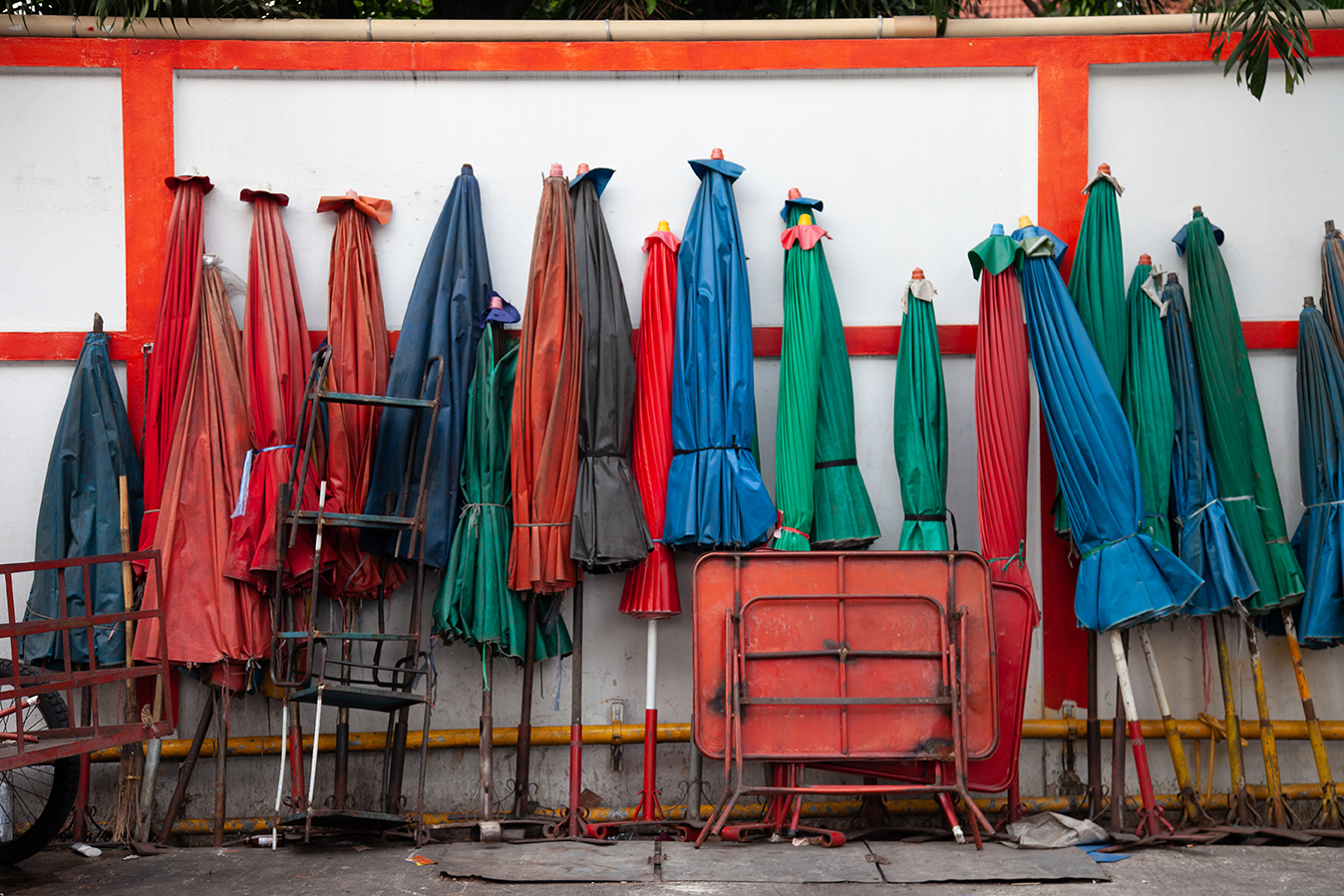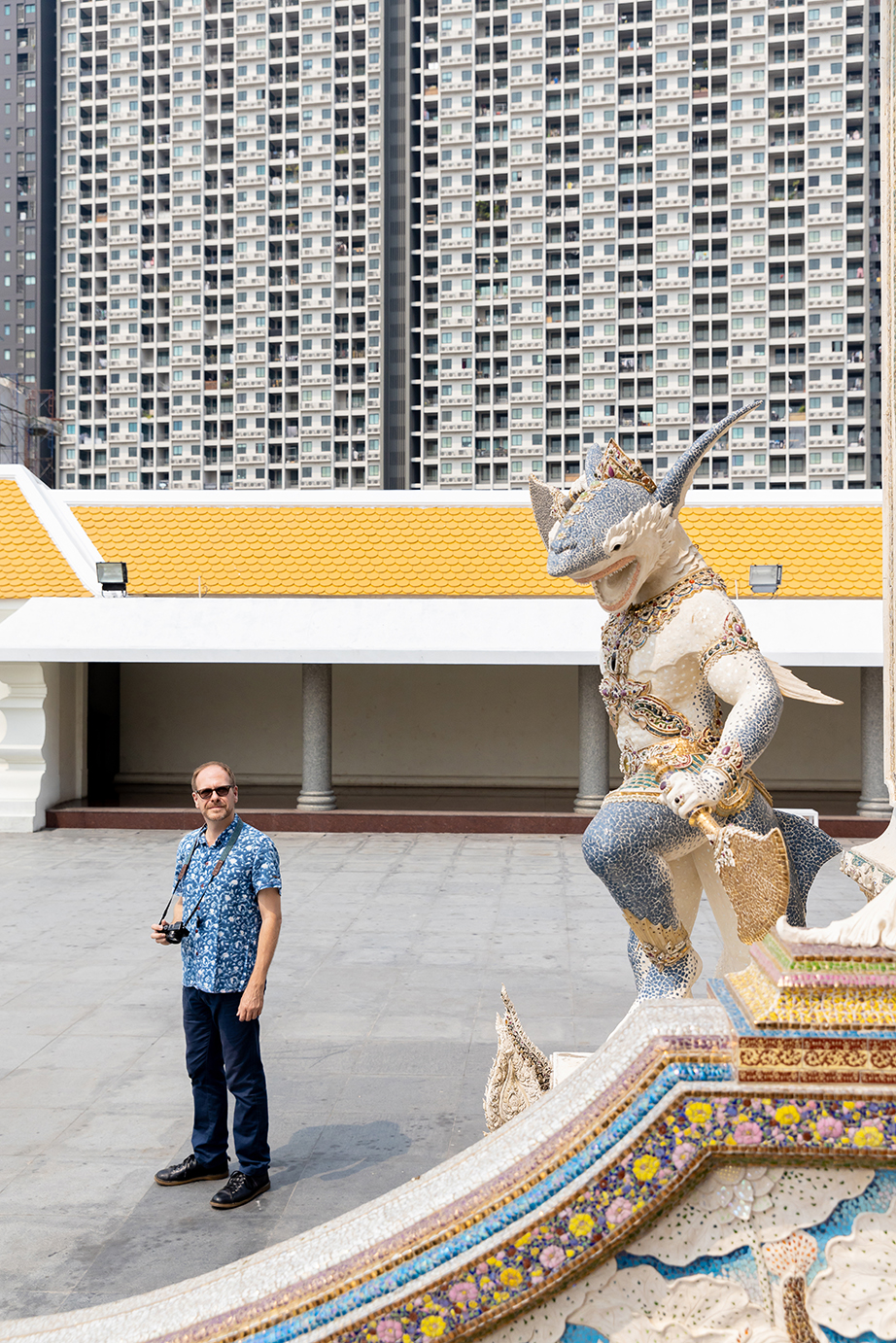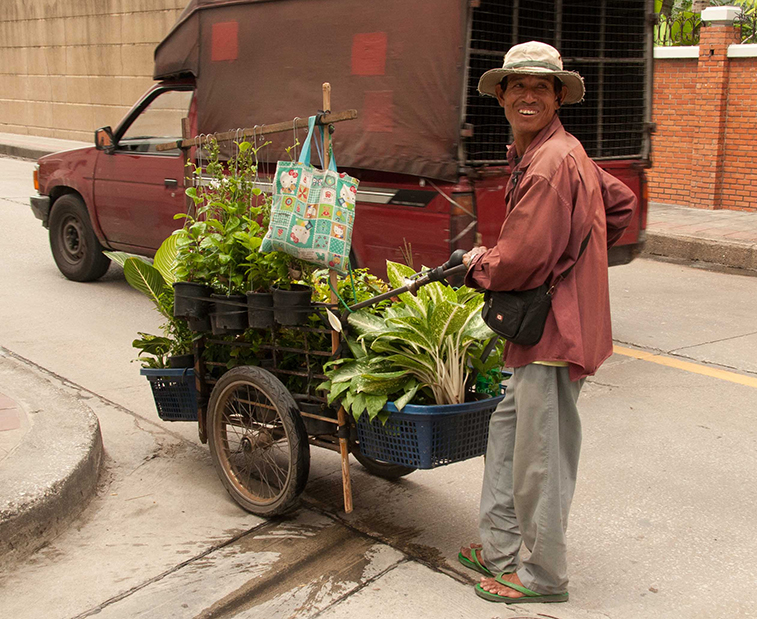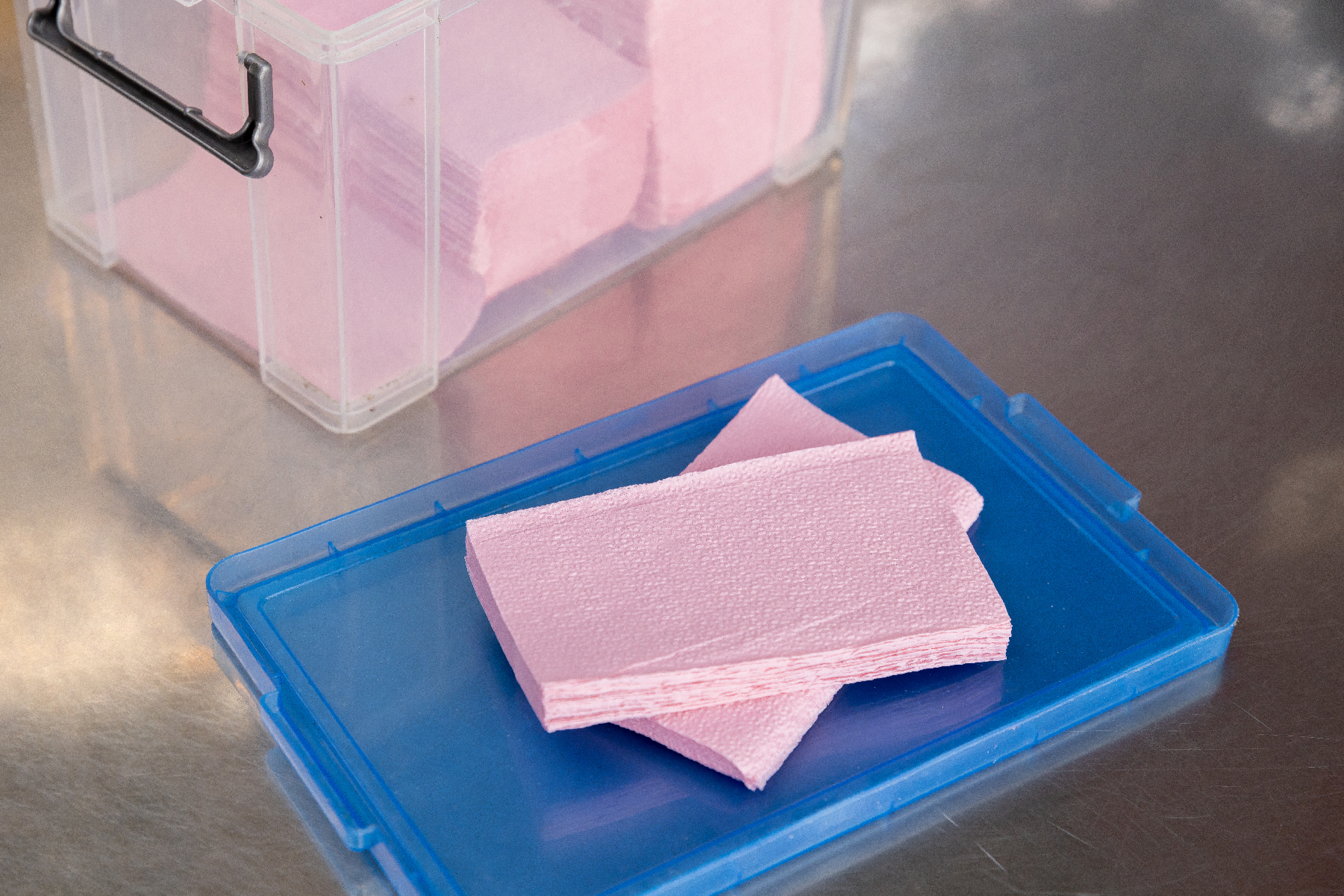ART4D HAD A CHANCE TO SIT DOWN WITH PHILIP CORNWEL-SMITH, THE AUTHOR OF BOTH THE EDITIONS OF VERY THAI THAT WAS RELEASED RESPECTIVELY IN 2005 AND 2013
INTERVIEW BY PIYAPONG BHUMICHITRA / KANOKWAN TRAKULYINGCHAROEN / PAPHOP KERDSUP
PORTRAIT & MAIN IMAGE: KETSIREE WONGWAN
PHOTOS: PHILIP CORNWEL-SMITH
(For English, please scroll down)

บทต่อมาเกี่ยวกับการออกแบบแบบพื้นถิ่น (Vernacular Design) ซึ่งมันก็คือเฟอร์นิเจอร์ที่คุณเห็นคนใช้กันอยู่ในชีวิตประจำวัน มันเป็นของที่ทำขึ้นอย่างง่ายๆ แต่ก็สามารถแก้ไขปัญหาได้ตรงจุด เดินออกไปตามถนน เราจะเห็นอะไรต่อมิอะไรมากมายที่เป็นของทำมือที่ทำจากวัสดุที่หาได้แถวๆ นั้น อย่างเช่น ที่กั้นรถ ม้านั่ง หรืออุปกรณ์ที่ใช้จัดคิววินมอเตอร์ไซค์ ทุกอย่างมันยูนีคมากและแสดงออกถึงไหวพริบของคนทำ มันน่าสนใจมากที่เราได้เห็นของทำมือเหล่านี้ในกรุงเทพฯ ซึ่งหาดูไม่ได้จากที่ไหน
บทที่ชื่อ Thai Thai พูดถึงการที่วัฒนธรรมสมัยนิยมค่อยๆ กลายมาเป็นวัฒนธรรมกระแสหลักไปในที่สุด ผมเห็นหลายๆ กรณีที่คนมักจะใช้คำว่า Very Thai ไว้เรียกของแปลกๆ ที่ถูกพูดถึงในหนังสือเล่มนี้ จนเริ่มจะรู้สึกว่าคำว่า Very Thai ได้กลายมาเป็นคำบรรยาย เป็นชื่อเรียก เป็นชื่อประเภท ที่คนเอาไว้ใช้เรียกสิ่งที่ต่างไปจากความเป็นไทยแบบประเพณี หนังสือเล่มนี้ไม่ได้เกี่ยวกับวัฒนธรรมไทย แต่ผมต้องการให้น้ำหนักกับของที่เราเห็นกันจนชินตาในชีวิตประจำวัน โดยเฉพาะตามท้องถนน สิ่งที่เกี่ยวข้องกับความเป็นเมืองที่เป็นลูกผสมระหว่างความเป็นสมัยใหม่กับความเป็นประเพณี
หลังจากที่ตีพิมพ์ไปไม่กี่ปี ตัวหนังสือเองเริ่มมีอิทธิพลต่อความคิดของคนมากขึ้น ดีไซเนอร์หรือคนทำอีเวนต์หลายๆ คนใช้ Very Thai เป็นแหล่งหาไอเดีย มันเข้าไปอยู่ในการเรียนการสอนในมหาวิทยาลัย และมีอยู่หลายครั้งทีเดียวที่ผมไปเทศกาลออกแบบแล้วพบดีไซเนอร์ที่บอกว่าคอลเล็คชั่นของเขาได้รับแรงบันดาลใจจากหนังสือเล่มนี้ ศิลปินบางคนนำหนังสือเล่มนี้ไปจัดแสดงร่วมกับงานศิลปะในนิทรรศการ หลายครั้งที่อะไรแบบนี้เกิดขึ้นโดยที่ผมเองไม่รู้ด้วยซ้ำ ผมเพิ่งมารู้ทีหลังว่ามีคนเอาหนังสือไปใช้ในฐานะวัตถุจัดแสดง




PCS: Very Thai is about popular culture, which reflects popular taste, and taste keeps changing. So, the book has to be realistic, and keeps evolving. The second edition came out several years after the first. I thought to myself, enough changes have happened that I wanted to do a new version. Also, there wasn’t really a conclusion to the first edition. The second edition has got 4 additional chapters, and they give a round-up of what Very Thai is really about, and the book’s effect on the culture itself.
Almost every chapter has parts rewritten or added, and certain pictures had to be updated. One of those extra chapters talks generally about what had happened since the first edition. The big protest movements hadn’t started yet, and those changed a lot about the way the country sees itself. Also, the digital devices had been minor before Very Thai first came out, but now they’re essential to everything.


Since the second edition, there have been more changes. I think the book maybe due for an update in coming years. Some topics just no longer exist in the same way, like the comedy cafes. They were a big scene back then, but maybe I need to focus on newer forms of humour, since satire is on television now. Those comedy cafes shifted into the TV variety format and comedy films as well.
Read the full interview in art4d No.266 ‘Urban reflections’

